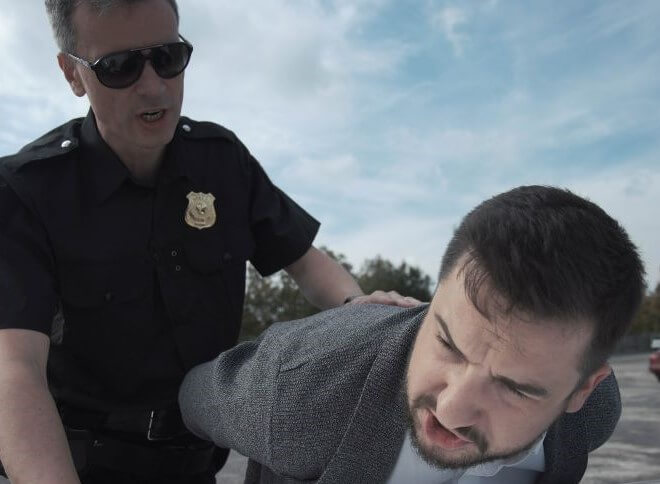If your safety is threatened, obtaining a restraining order provides protection. Certain steps must be taken, including getting the evidence required for the court to grant it. But what proof do you need for a restraining order? This guide will provide the information you need to begin the process. Preparations must be made when your safety is at risk, and legal assistance can help you obtain the court petition.
Introduction to Restraining Orders
A restraining order, protective order, and order of protection are all common terms that refer to injunctions for protection. The petitioner is the person filing the order, and the respondent is the person you want protection from through the justice system. The restraining order commands the respondent not to do certain things, which can include:
- Not contacting the petitioner
- Not going to the petitioner’s home
- Not going to the petitioner’s workplace
These limitations provide physical distance to prevent violence and barriers to communication that protect the petitioner too.
Another restriction that the courts may place in a restraining order, such as a domestic violence injunction, is prohibiting the respondent from possessing firearms. If the restrained person violates the court order, they could be sanctioned for contempt of court, have additional restrictions placed on them, or face criminal charges.
Restraining orders can be temporary in their duration or permanent.
Understanding the Purpose of Restraining Orders
When people are violent or have been threatening violence, it causes physical harm and emotional suffering. Violence or threats can place people in extreme danger, causing stress for themselves and their families.
The purpose of restraining orders is to help prevent any further harm. Reasons that someone might need a restraining order include being subjected to domestic violence, harassment, or stalking.
Getting a restraining order granted imposes critical restrictions on the respondent’s actions, providing the petitioner with much-needed safety and peace of mind.
Types of Restraining Orders and Their Scope
There are several types of restraining orders, called “injunctions for protection,” in the state’s justice system. The kind that needs to be pursued will depend on your situation, which includes:
- Domestic Violence Injunctions
- Repeat Violence Injunctions
- Dating Violence Injunctions
- Sexual Violence Injunctions
- Stalking Injunctions
Injunctions are put in place to protect individuals from violence and may be granted immediately, depending on the circumstances.
What is a temporary injunction?
Atemporary injunction is a restraining order designed to provide immediate protection. These are often used in domestic violence situations with an immediate and present danger of violence.
Temporary injunctions last, at the most, up to 15 days unless there is a continuance for “good cause” granted by the judge.
What is a final injunction?
A final injunction can provide more protection. After the temporary injunction, a hearing is set where the case can then be presented more comprehensively to the judge. Petitioners do need to be present in court for the final hearing. When the judge makes their decision, the order could have a set time frame, or it could become permanent.
If your situation does not meet the parameters of a domestic violence injunction, court orders may also be utilized in cases of repeated violence, dating violence, sexual violence, and stalking. Each type of injunction has its own parameters under the law.
Do you have to go to court for a restraining order?
Not for a temporary injunction. Additionally, the abuser does not need to be present at the filing of the court order. The judge decides whether to grant the order based on the information in the filed petition.
What Proof Do You Need for a Restraining Order: Essential Evidence
The types of evidence that can be used to obtain a restraining order include documentation of incidents, witness testimonies, and physical evidence.
The details of what happened, physical evidence such as photos or medical records, and any witness statements corroborating the abuse strengthen the petitioner’s case to get the restraining order granted.
Documenting Incidents of Abuse or Harassment
Documentation of abuse or harassment is vital to proving an immediate and present danger. It is crucial to keep a log of the events with details and save any threatening messages (voicemails, emails, texts, etc.).
Witness Testimonies and Statements
Witness testimonies and statements can play another strong role and help support your case. Witnesses can testify by an affidavit (sworn statement) or testify at the hearing. If there are any witnesses to abuse or harassment, this third-party corroboration is important to present the strongest case possible to obtain the restraining order.
Physical Evidence: Photos, Videos, and Injuries
Documenting the physical evidence of what happened through a recording, such as a video or a photo, can also help build a solid case to get the order granted. Many phones also have a voice memo application or similar feature where audio-only files can be recorded more discreetly, if possible.
Showing the extent of the injuries can demonstrate the severity of the situation and the danger to yourself and your family.
Do You Need Evidence to File a Restraining Order: The Legal Process
Typically, the judge will need to see some type of evidence to grant a restraining order.
Here is an outline of the legal process:
- Gather and organize evidence
- File the necessary paperwork
- If a temporary injunction is granted, you will need to attend the final court hearing.
Evidence plays a crucial role in obtaining a restraining order. When a court decides to restrict someone’s freedom, there must be more than an accusation.
What Happens When You File a Restraining Order: The Aftermath
Once a restraining order is filed and granted, it serves as your legal protection against harm. You can feel a sense of safety due to the restrictions, and the respondent is required to obey them.
The order will be enforced by local law enforcement, and the respondent will face the consequences if they violate it.
Violations of the Restraining Order: Legal Consequences
There are multiple potential legal consequences if the respondent violates a restraining order, such as:
- fines,
- jail time, or
- more severe penalties depending on the situation.
Modifying or Dissolving the Restraining Order: Changing Circumstances
If there is no expiration date on a final injunction and circumstances have changed, either party can file to modify or dissolve the court order.
A petition would need to be filed with the court. A hearing would then be set where the party who filed for changing circumstances must justify their petition.
The case for modifying or dissolving would have to be convincing for a judge to approve.
Navigating the Process of Obtaining a Restraining Order
Restraining orders provide critical legal protection if you are in danger, placing restrictions on a person who intends to cause you harm. There are injunctions for immediate protection through a petition and long-term protection through a court hearing and permanent injunction. Navigating the process of obtaining one can be challenging, and preparation and understanding what proof is required is important.
Everyone deserves to be safe from violence and harassment. Seek legal assistance when it is necessary and utilize available resources for support.
Contact the law office of Dean Tsourakis today for restraining orders & injunctions assistance. Call 727-785-2700 to set up a free, confidential consultation.
on May 15, 2023


